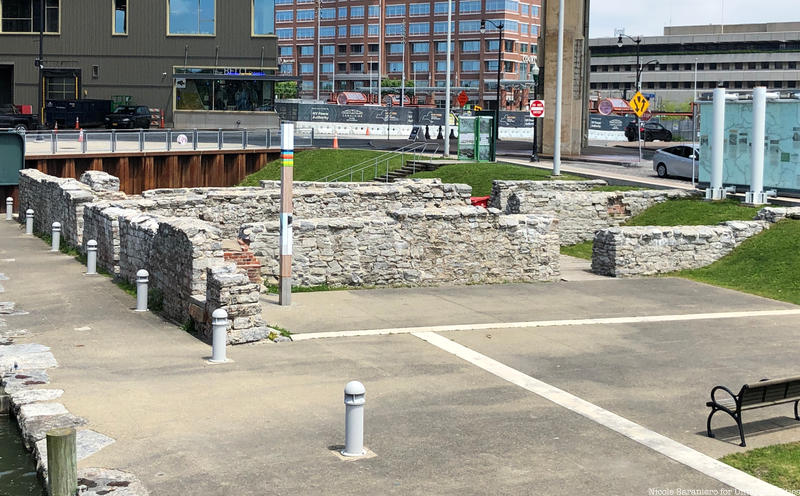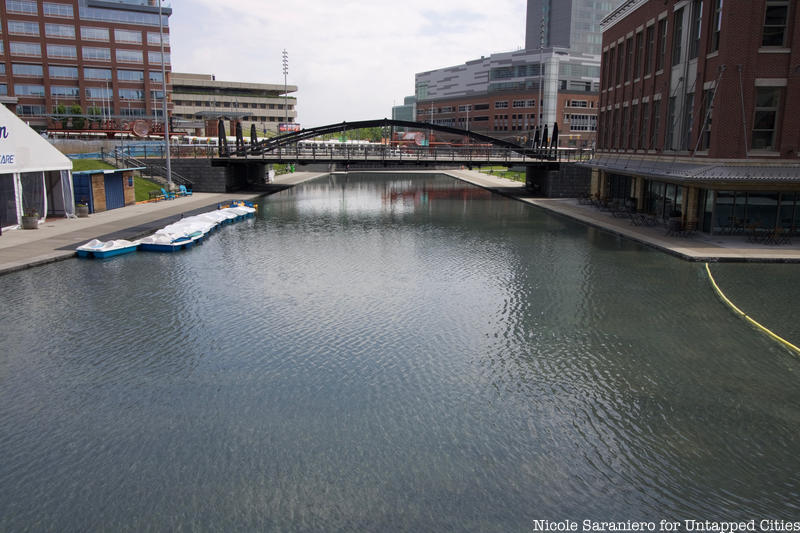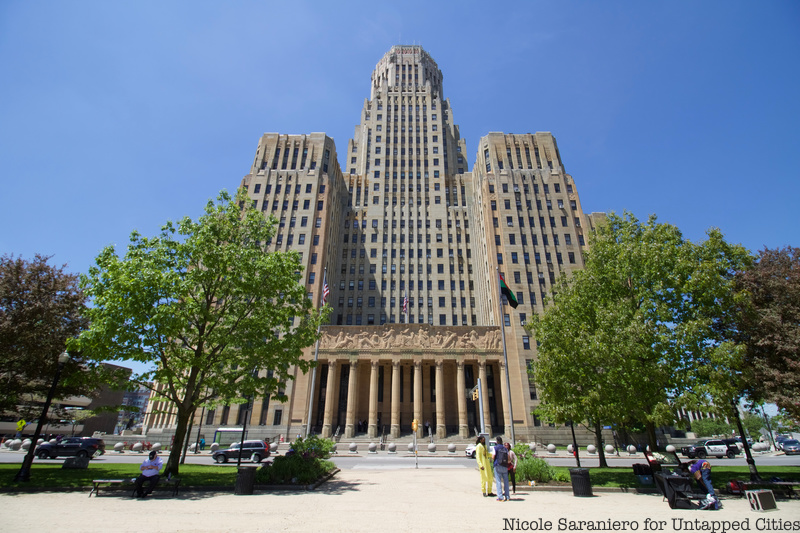
Tucked on the western edge of New York State, often overlooked for the nearby Canadian city of Toronto and the attraction of Niagara Falls, the former boomtown of Buffalo is reaffirming its spot on the map. Buffalo, the second most populated city in the state behind New York City, reached its most populous and prosperous times in the late 19th to early 20th-centuries largely thanks to the business brought by the Erie Canal. Steel and grain were major industries for the city and fortunes were made in banking as well. However, like most boomtowns, Buffalo eventually went bust. But now, the city is making a comeback.
This city on the edge of Lake Erie is leaning on the foundations of its past to build a more prosperous and productive future. New businesses are being courted with programs like 43 North which invests $5 million a year in promising startups. The arts and food scenes are thriving and the wonderful historic architecture of the city is being preserved and adapted for modern use. Communications Manager of Visit Buffalo Niagara Brian Hayden notes that “what is exciting and new isn’t to the detriment of what’s old and classic.” Untapped Cities spent a few days exploring the city and discovered that there is so much more Buffalo has to offer than wings. Here are some of our favorite things to do:
Where to Stay: The Richardson Hotel
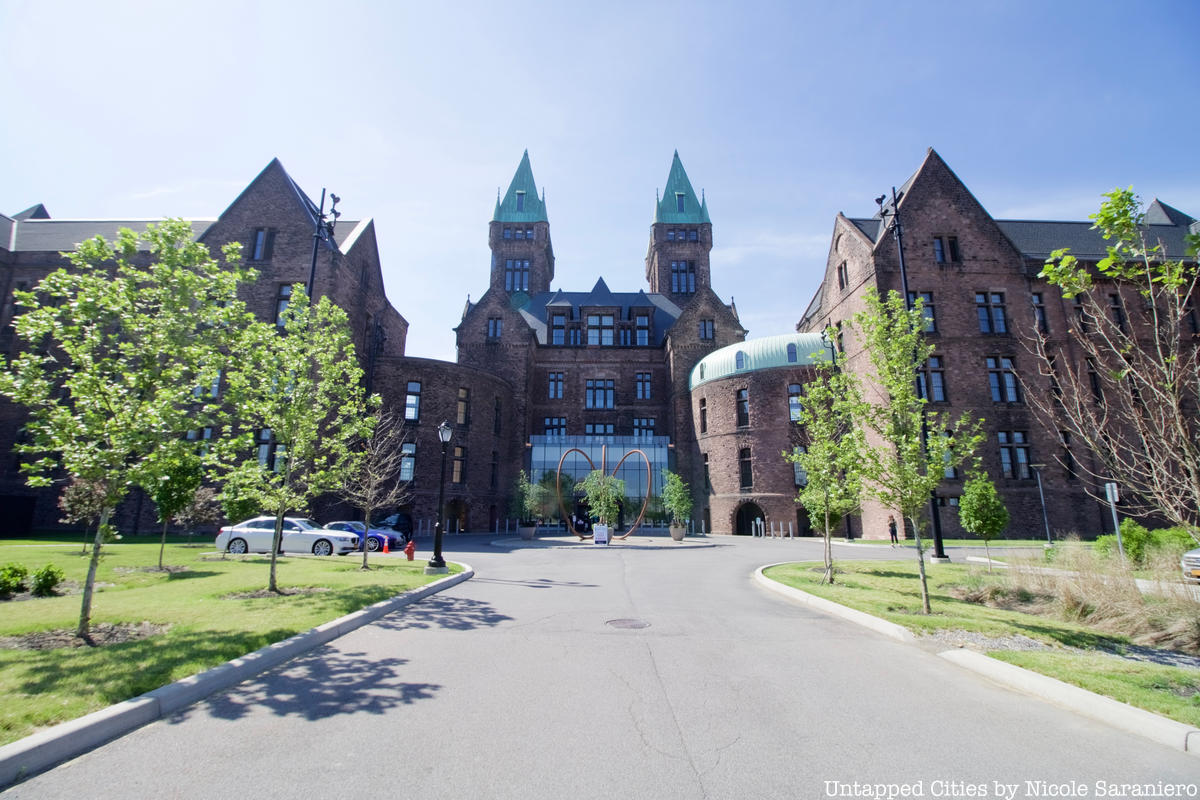
For nearly fifty years, the looming towers of the Buffalo State Asylum for the Insane towered over an abandoned site while residents wondered what the fate of the historic location would be. The buildings on the campus were designed by renowned architect Henry Hobson Richardson in his signature Romanesque Revival style, a style that would come to bear his name, Richardsonian Romanesque. The landscaping on the over 200-acre campus was designed by Frederick Law Olmsted, the man responsible for iconic green spaces like Central Park, as well as several parks in Buffalo and their connecting parkways (more on this later!). Construction began on the campus in 1872 and it opened as the Buffalo State Asylum for the Insane in 1880. In 1927 half of the campus was given over to Buffalo State College but the asylum continued to operate through the mid-1970s. By 1975 the site was mostly vacant and only a few administrative personnel remained.
Today, the campus is down to 42-acres but the site is getting a new life through various adaptive-reuse projects. The first of these projects to be completed is The Richardson Hotel (formerly known as The Hotel Henry Urban Resort and Conference Center). Opened in the spring of 2017, the hotel occupies the Tower Building and two of the first flanking wards. Since the site was designated as a National Historic Landmark in 1986, the hotel maintains much of the building’s original architectural features.
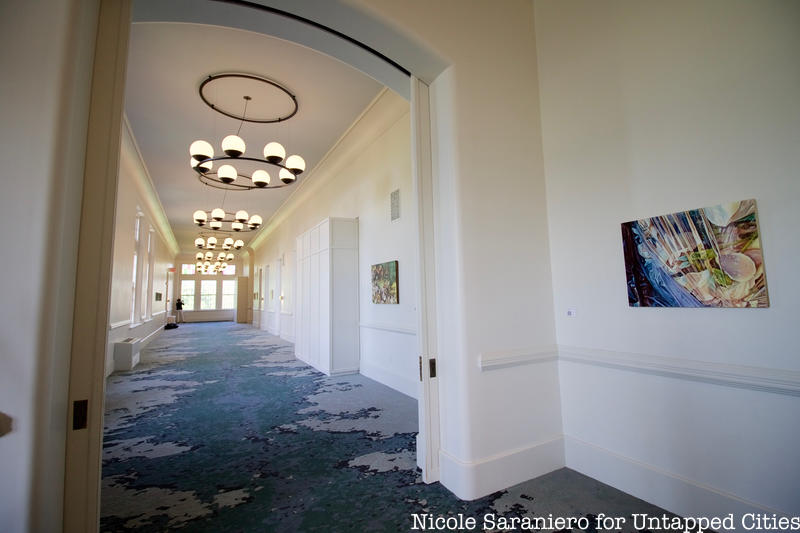
Employing the Kirkbride Plan, the main structure had an administrative building at the center flanked by two wings – one side for men and one side for women – which were further separated into tiered wards based on conditions and illnesses. The Asylum used the design to bring the outside in, as exposure to nature was seen as an essential part of treatment. Painted blue ceilings that mimic the sky inside are soaringly high and there are rooms on only one side of the hallway so there is always natural light. The hotel rooms occupy the amount of space that would equal about two patient rooms. You may also notice that all of the door frames are rounded instead of square. A fun story from the restoration that we heard while touring the building is that when plaster was removed from the walls it was discovered that the brick underneath was also curved.
Since the site had been abandoned for so long, tantalizing the community with mystery, the adaptive-reuse projects aim to bring the public in. The hotel uses its wide hallways and stunning grounds to host seasonal markets, art shows, and yoga classes that all are welcome to attend, not just guests of the hotel. The Richardson Center Corporation, the non-profit spearheading the re-use, offers tours of the Richardson Olmsted Campus which bring the public into some of the unoccupied buildings and teach them about the campus’ history.
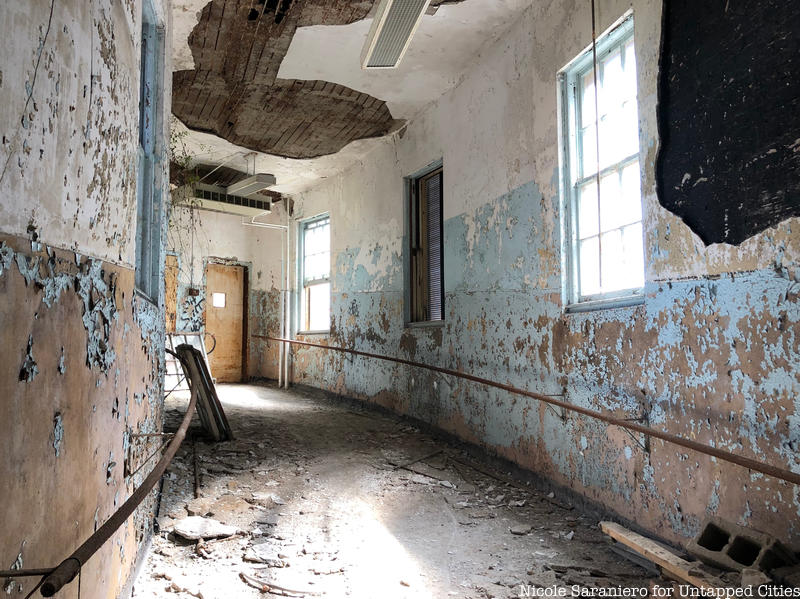
In addition to the hotel, which occupies one third of the campus, the site will be home to the Lipsey Architeture Center Buffalo and other exciting projects spread throughout the eleven remaining unoccupied buildings on the campus. Hotel Henry is located in the heart of Buffalo’s Museum District, steps away from cultural destinations and Delaware Park, making it the perfect home base for a visit to the city.
Historic Sites
1. Frank Lloyd Wright’s Martin House
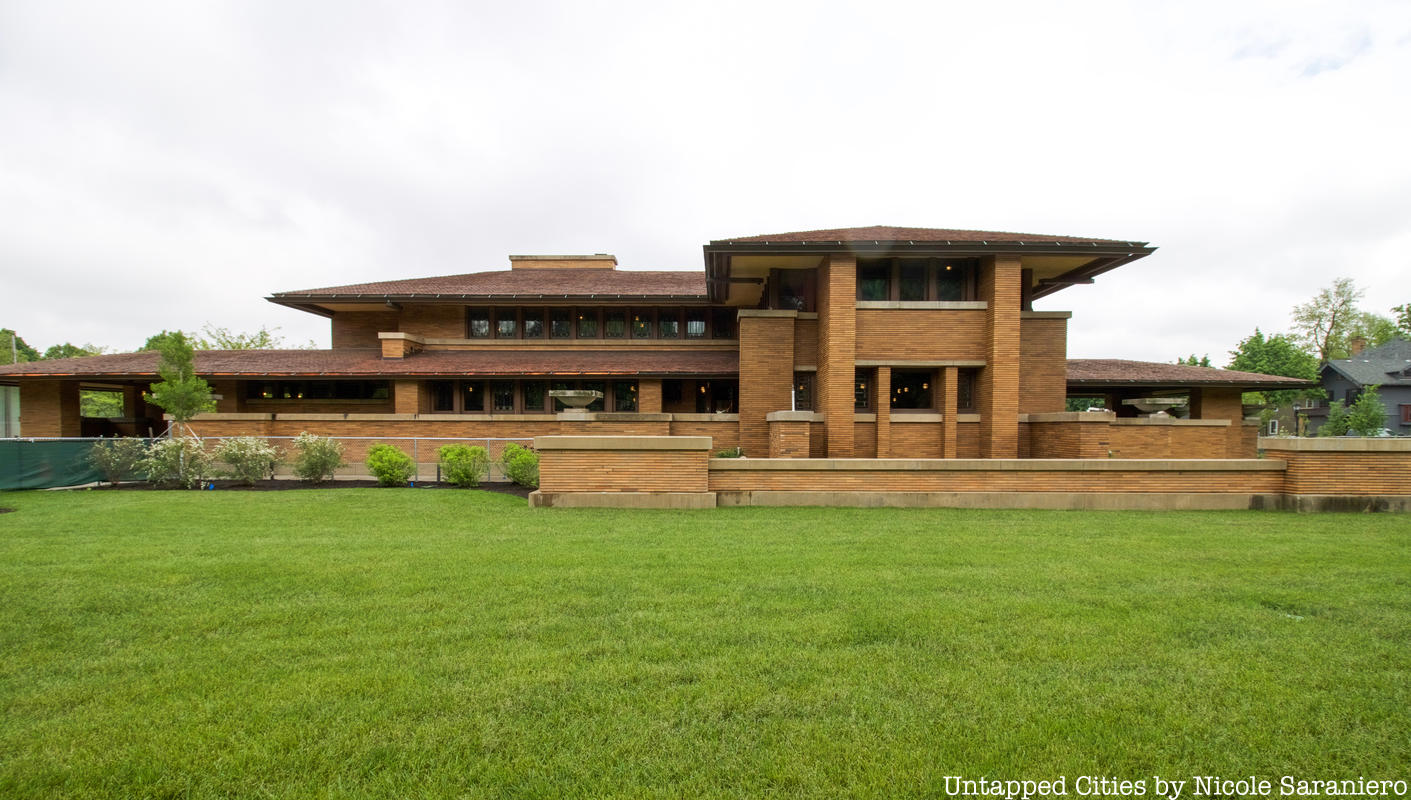
Outside of Chicago, Buffalo is the only city that boasts buildings by all three of the recognized “Trinity of American Architecture:” Henry Hobson Richardson, Louis Sullivan and Frank Lloyd Wright. Wright’s contribution to the architecture history of Buffalo was The Martin House. In fact, it is actually a complex of six interconnected structures designed Buffalo businessman Darwin D. Martin and his family in Buffalo’s Parkside neighborhood. Constructed between 1903 to 1905, the complex is considered by many to be one of the best of Wright’s Prairie Phase and his entire career.
The Martins enjoyed the home until 1937 when Darwin died and his family left the property. For nearly twenty years after it sat abandoned and three structures were eventually knocked down: the Martin House pergola, conservatory and carriage house. The house was declared a National Historic Landmark in 1986 and preservation efforts began in the late 1990s. Restoring the complex to the way it was when first built was a massive undertaking which was only complete just this summer when the finishing touches were put on the landscaping. In the end, the entire project cost more than $50 million.
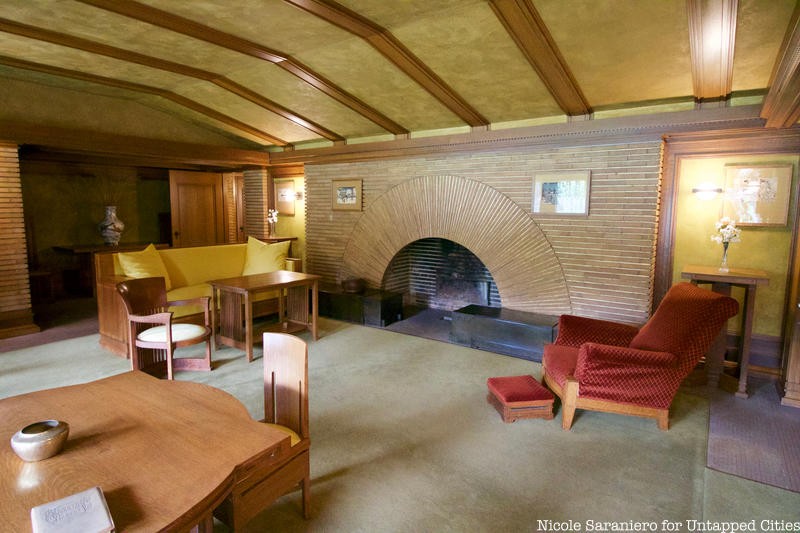
Walking around the Martin House, you can see the genius of Frank Lloyd Wright in the design. The home is filled with custom-made furniture, fifty-five pieces in total. There are 394 Wright-designed panels of art glass in the windows, many of which display Wright’s signature tree of life pattern. And not to mention the two stunning fireplaces, one a sunburst of brick and gold-leaf covered mortar and the other a shiny mosaic tile depiction of wisteria. There are too many architectural details to lists, and hidden practical features like secret bookshelves, that Wright worked into the design to make it functional for the Martin family while also serving his creative vision. He even designed a grandfather clock! All of this, and there is more to see outside. One of the special features of the Martin House complex is how Wright blended outdoor and indoor spaces among the connected buildings. You can visit the Martin House for a variety of guided tours of the buildings and gardens. Reservations are strongly recommended. If you prefer a self guided experience, visitors are welcome walk around at their leisure on select Mondays during Wright Nights.
2. Buffalo Central Terminal
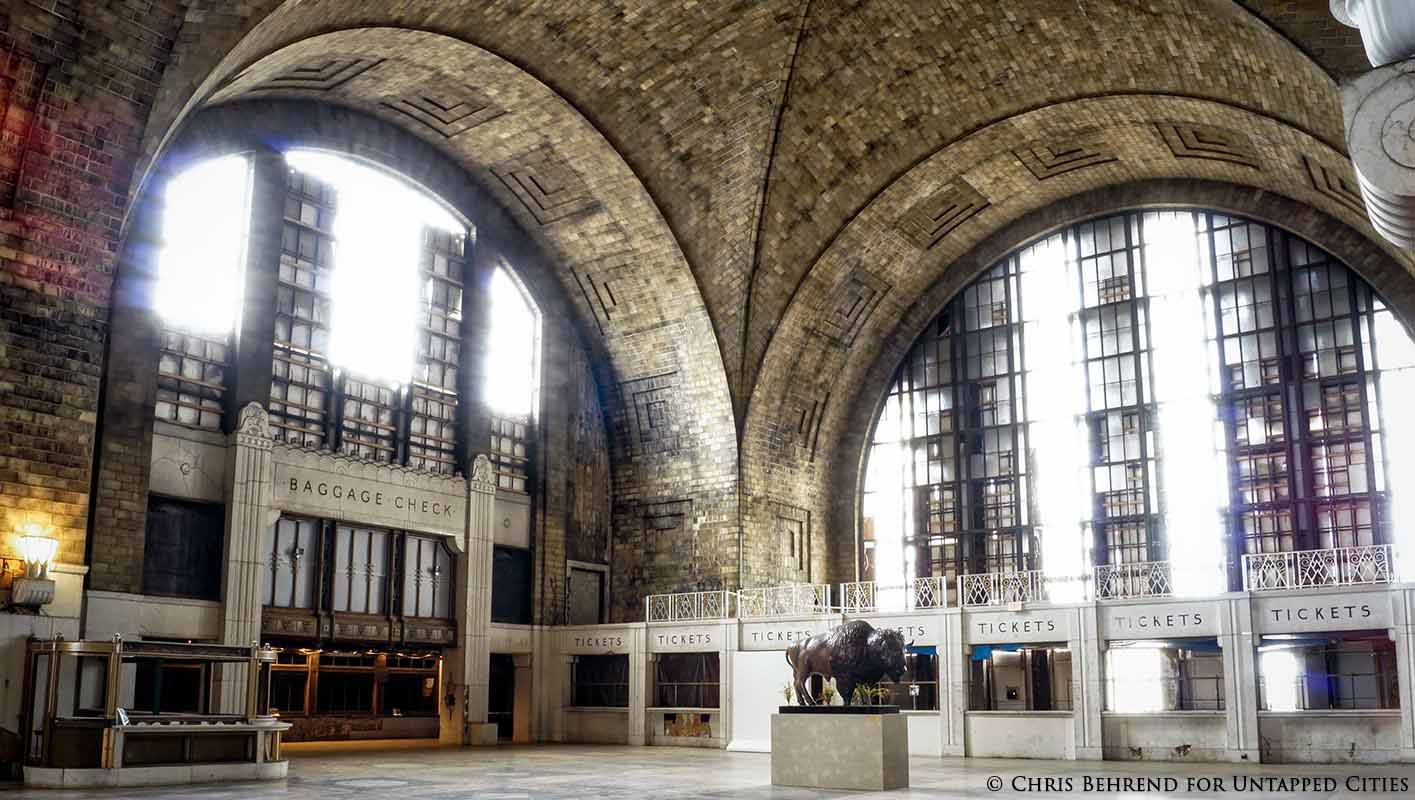
If you plan your trip right, you may be in town for one of the once-a-month historical tours of Buffalo Central Terminal. The terminal opened in 1929 with the capacity to serve 10,000 passengers daily on more than 200 trains. The giant Art Deco beauty chugged along through the Depression and saw its peak activity during World War II as soldiers and goods traveled through. After the War, with the rise of the automobile, transportation by rail slumped. The terminal was in use up until 1979 and then stood abandoned for decades.
In 1997, the 18-acre site was acquired by Central Terminal Restoration Corporation, a non-profit that intends to refurbish and repurpose the property on Buffalo’s East Side as a thriving hub for community events. They already hosts multiple events like monthly tours and Sunset Concerts as well as an annual train show. Be sure to check their schedule of events before your visit.
3. Theodore Roosevelt Inaugural Site
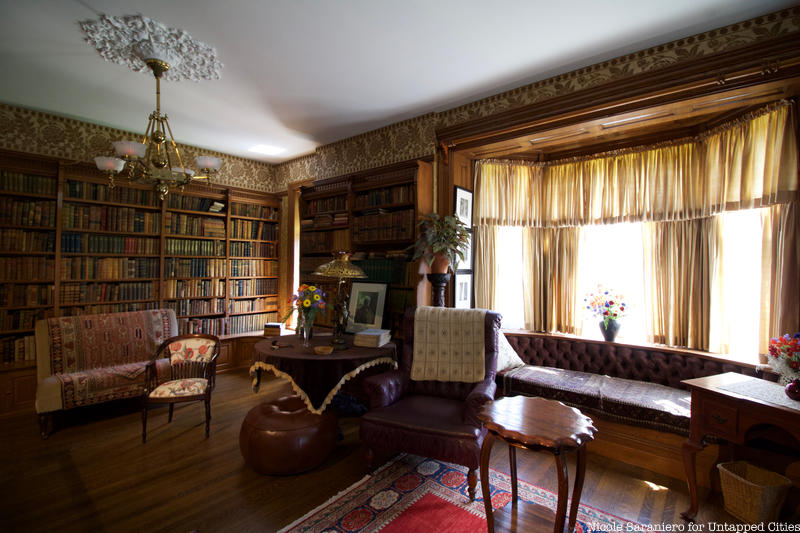
Only four of the United States’ forty three presidents have taken the oath of office outside of Washington, D.C., usually when tragedy necessitates it. Tragedy struck at the 1901 Pan-American Exposition in Buffalo when President William McKinley was shot during his speech at the Temple of Music. The location where the building once stood is now a residential area and the assassination is marked with a plaque. Then Vice President Theodore Roosevelt was rushed from Vermont, where he was away on a speaking engagement, to New York for fear of the worst.
Under the impression that McKinley would make a full recovery after surgery, Roosevelt joined his family in the Adirondacks for a few days vacation. His relaxation was cut short when he was summoned back to Buffalo just three days later. Roosevelt returned to the home of his friend Ansley Wilcox on Delaware Avenue and it was there in the library that he took the oath of office. Today, the Wilcox home is known as the Theodore Roosevelt Inaugural Site, a house museum dedicated to the historic event the historic presidency that followed. Along with period rooms full of original furniture, the museum employs modern interactive technology to make history come to life. Walking through the dining room you’ll smell coffee brewing and hear the chatter of house guests. Inside the Issues Theater you’ll hear words straight from the diaries and speeches of Roosevelt on challenges he faced during his presidency, issues that remain poignant to the current day. The museum is continually working to incorporate new technology and new exhibits to tie the events of the past to our contemporary national news in an educational and productive way.
4. Buffalo City Hall

Buffalo City Hall is a feast for the eyes and a definite must-visit location for visitors interested in architecture. The Art Deco building was designed by architects John Wade and George Dietel and until 1970, it was the city’s tallest building. Its height and central location make it the perfect place to see the city from above. Every weekday the City Hall’s Observation Deck is open and free to the public from 8:30a.m. through 4:00p.m. After going through security, take an elevator up to the 25th floor and ascend three short staircases. You will come out into Windows on Buffalo, a room of 360 degree windows and signs telling you what you can see out each one. You will get a clear view of the waterfront and see the city’s radial street design.
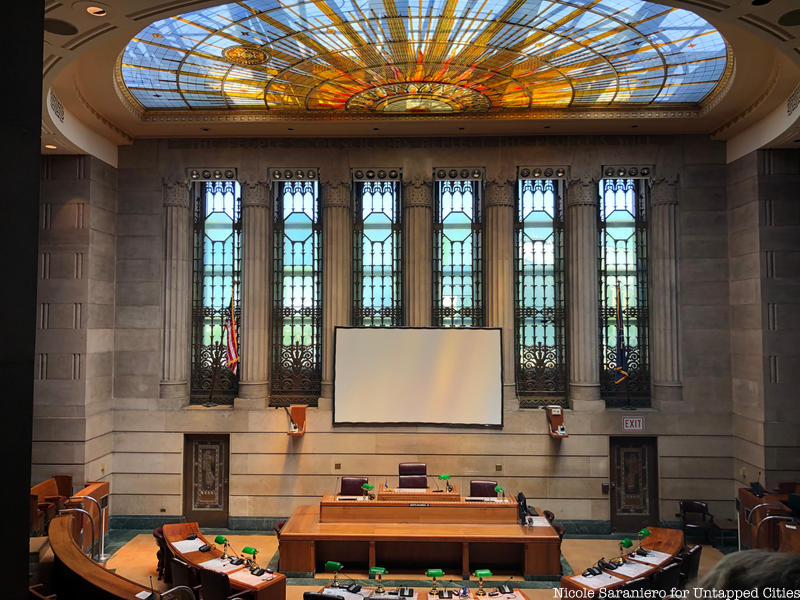
Another way to get to the Observation Deck is by taking a free guided tour of the building. Tours are offered every weekday at noon and no reservation is required, just meet in the lobby. The tour will point out interesting details of the elaborate decor, like the swatiskas in the lobby ceiling that were scratched out and those that still remain, a symbol which had positive connotations before being appropriated by the Nazis. In addition to the ornate lobby, which is decked out in giant murals depicting Buffalo’s industry, Native American-inspired mosaic tiles on the impressive domed ceiling and gilded Art Deco accents, the tour will also take you into the Common Council Chambers on the 13th floor where there is a stunning sunburst skylight. After the tour you will be in the heart of downtown.
Arts and Cultural Sites
5. Silo City
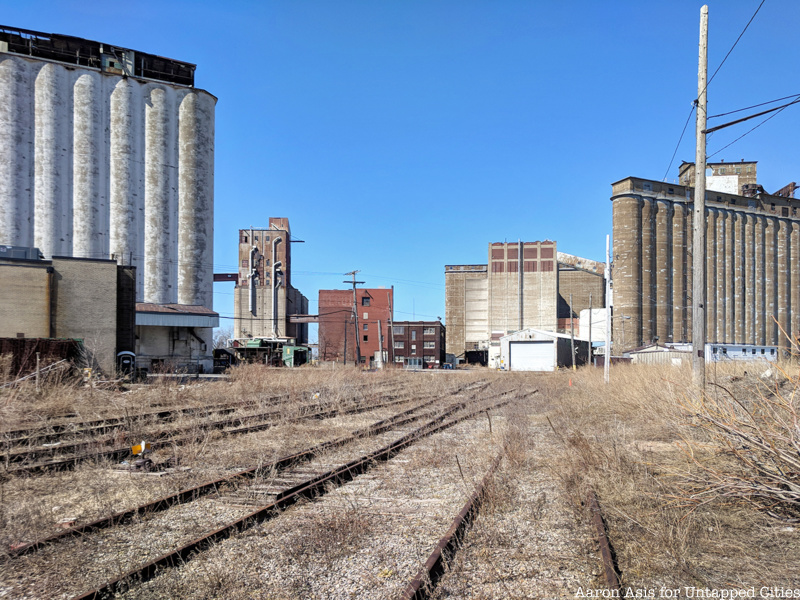
Driving up to Silo City, past the vestiges of Buffalo’s industrial past that lie along the Buffalo River, while smelling the scent of Cheerios wafting by from the General Mills factory, you wouldn’t guess at the creative cultural events happening within. Self described as “just your average, everyday historic grain elevator complex that doubles as a music venue, theater backdrop, poetry site, and industrial film location,” the complex is made up of six separate industrial buildings that date back to early 1900s. Those buildings include the Marine A Grain Elevator, Lake & Rail Elevator, American Grain Elevator, Perot Grain Elevator and Perot Malthouse, and finally the American Warehouse.
Today the complex, as mentioned above, is used for a variety of purposes from film shoot location to wedding venue and art exhibition space. The largely empty industrial spaces are basically a giant blank canvas for public art and serve as a unique venue for musical performances with a near fifteen second echo. Recently a bar-restaurant opened at Silo City inside a 1940’s office building owned by American Malting Company. The interior of the bar, Duende, was designed using materials salvaged from the silos themselves. Another attraction at Silo City is the SS Columbia, America’s oldest surviving passenger steamboat, and what would be consider a “floating palace” like those massive steamers that sailed the Hudson River. The Columbia once shuttled summer revelers from the city of Detroit to an amusement park on Canada’s Bois Blanc Island (known to most as BobLo Island).

If you are feeling adventurous, and don’t have a fear of heights, you can take a vertical tour of the complex with Explore Buffalo where you will get to climb up ten stories to the top of the Perot Grain Elevator and take in views of the city of Buffalo, Lake Erie, and the other grain elevators in the area. There is also a Grounded Tour, for those less inclined to climbing 150 feet of stairs. If the vertical tour of Silo City’s grain elevators only whets your appetite for adventure, you can also check our Riverworks, a nearby silo complex with a zip-line, bubble soccer field and more activities. You can also grab a drink at the adjoining brewery, affectionately called beerhenge, since it is inside the circular foundational ruins of an old grain elevator.
6. Albright-Knox Art Gallery
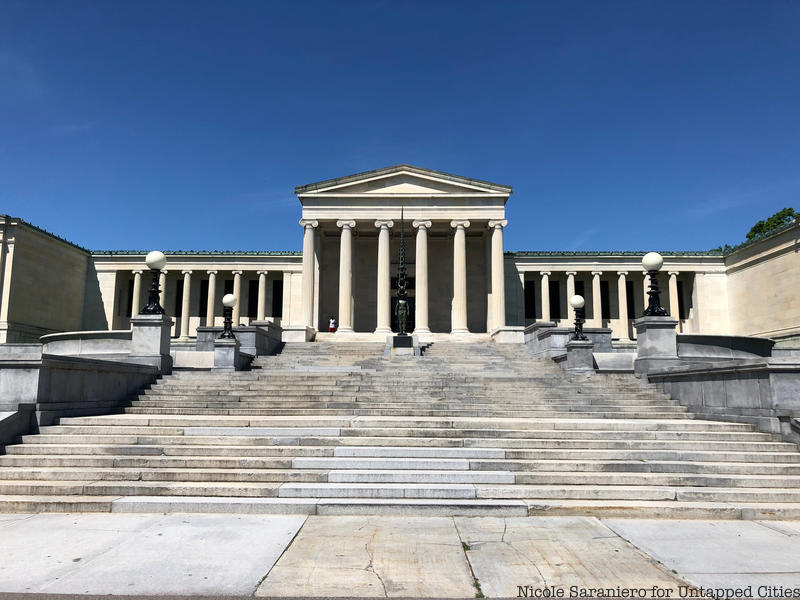
The Albright-Knox Art Gallery is one of the oldest public art institutions in the country. Founded as the Buffalo Fine Arts Academy in 1862, the institution’s board members saw the need for a permanent art gallery in the growing city. After bouncing around between several locations throughout the 19-century, the Fine Arts Academy got a proper home in 1905, thanks to funds from local business man John J. Albright. The colossal Greek Revival structure built to house the Academy’s collections was designed by architect Edward B. Green. The temple to contemporary art looks out onto views of Hoyt Lake just across Lincoln Parkway from Olmsted’s Delaware Park. In 1962, a sleek addition designed by architect Gordon Bunshaft was added to the museum and it was renamed the Albright-Knox for another of the institution’s important patrons.
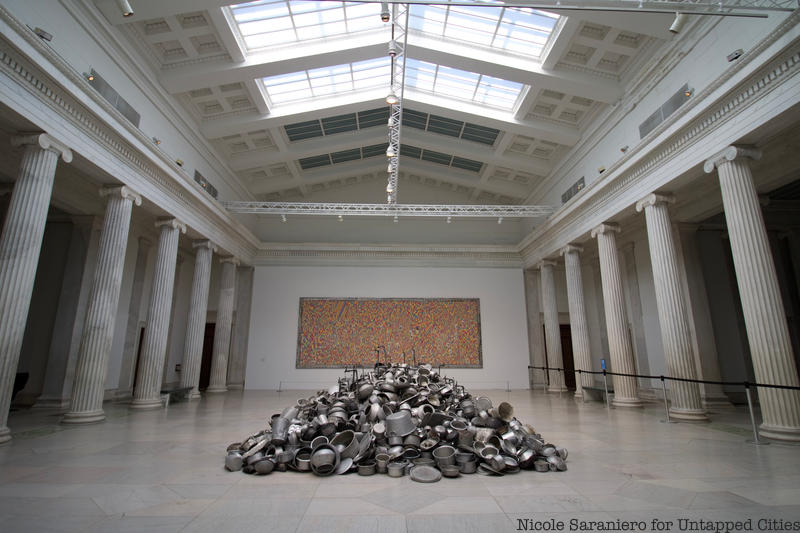
The Albright-Knox museum is immediately impressive from the outside, with striking modern sculptures set against the backdrop of its ancient inspired ionic columns, and the art inside is equally impressive. Among the works displayed you will find Picassos, Rothkos, Van Goghs, work from Frida Kahlo and Jackson Pollock and other household names. Dedicated to collecting, conserving, and exhibiting the art of its time, the Albright-Knox contains examples of every type of work from Impressionism to Cubism and Surrealism to Pop Art, as well as works from contemporary artists of today. You enter the museum through the glass enclosed addition on the Elmwood Avenue side. Once inside, it’s best to start making your way around the gallery which encircles the inner courtyard then make your way upstairs and into the historic galleries of the 1905 building. Due to construction, the Lincoln Parkway entrance is not in use, but you can take a stroll around the outside of the building, admiring the sculptures along the way, and end up in Delaware Park. If you want to see more art, the Albright-Knox is just steps away from the Burchfield Penney Art Center at SUNY Buffalo State, the only museum exclusively dedicated to the art and artists of Western New York.
7. Colored Musicians Club
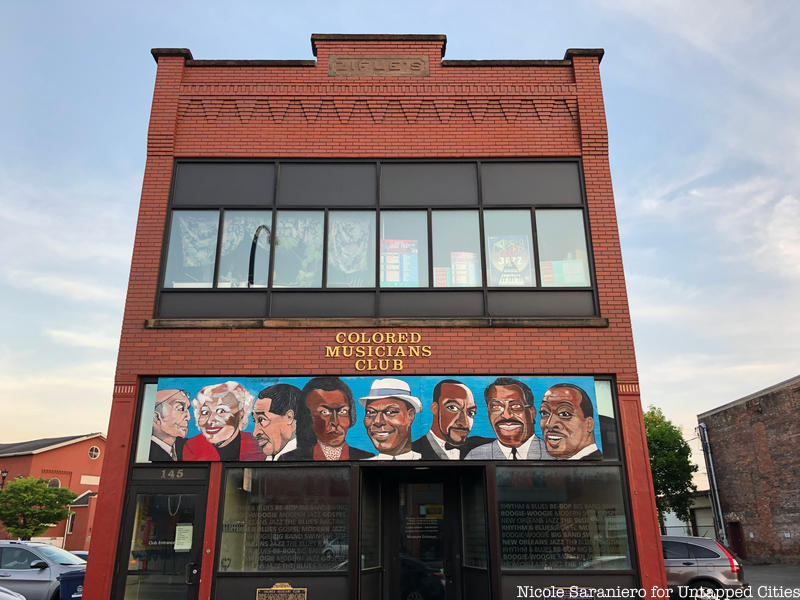
The Colored Musicians Club and Museum on the west side of Buffalo’s downtown is a historical site unlike any other. In the early 1900s, the only musician’s union in Buffalo was exclusively for white performers. In 1917, Buffalo Local 533, The Colored Musicians Union of Buffalo was formed. Members of the new union then banded together to form a social club where they could rehearse and socialize. They finally found a permanent home in a brick building on Broadway in 1944. It was in this building that the hottest names in jazz, like Duke Ellington, Count Basie, Louis Armstrong, Ella Fitzgerald and Billie Holiday would come to jam and relax after gigs at the big theaters nearby. Downstairs, the union conducted meetings.
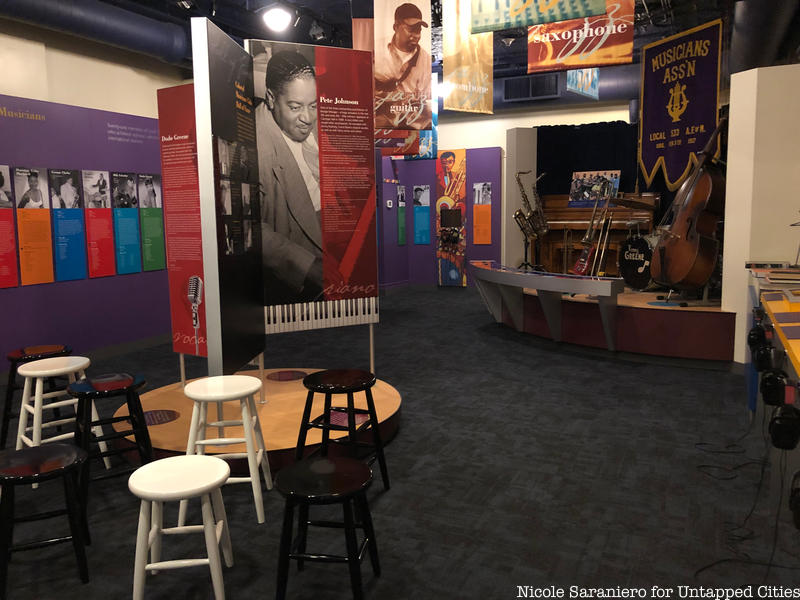
Today, the sounds of live jazz still fill the bar and performance space upstairs and a state-of-the-art museum takes up the ground level. Just as in the previous century, the club offers musicians a place to socialize and rehearse, with an open jam session every Sunday and live performances every Monday with Club President George Scott’s big band and every Thursday with the Carol McLaughlin Big Band. Just ring the doorbell to be let in! The atmosphere is laid back and anyone who wants to hear music is welcome. On our visit with Scott, he recalled how he came to the club as a young boy with his saxophone teacher to hear music. The museum downstairs is a tribute to Buffalo’s swinging past with an interactive display where you can mix your own jazz song, a wall of Buffalo’s greatest jazz musicians, and memorabilia like the club’s charter and certificate of affiliation for Local 533.
Outdoor Spaces
8. Delaware Park
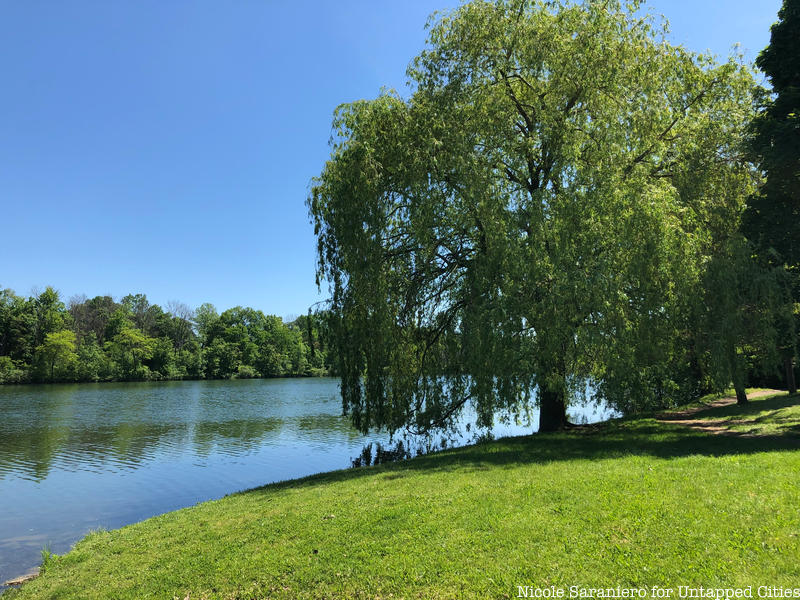
Frederick Law Olmsted, the famed landscape designer of Central Park, left his mark all over Buffalo. When contracted to create a park for the Great Lake city, Olmsted thought not one, but a system of multiple parks would best suit it. Together with Calvert Vaux, Olmsted created a system of six parks, seven parkways, eight landscaped circles and several smaller spaces spread across 850 acres. It was the first park and parkway system designed and built in the United States.
Delaware Park, at 350 acres, is the largest of the parks system. Designed 1868 through 1870, the “country park” embodies Olmsted and Vaux’s aesthetic of naturalistic landscape design. Intended for passive recreation, the park has rolling meadows, a forest and a twenty-three acre lake. Many historic buildings remain throughout the park such as the Parkside Lodge which serves as the offices for the Buffalo Olmsted Parks Conservancy and the Marcy Casino which was built in 1901 and now houses The Terrace restaurant. The oldest architectural structure in the park is the Ivy Bridge. Built in 1887 you can find it in the Rumsey Woods south of Hoyt Lake. Newer additions to the park include a Japanese Garden, playgrounds, a golf-course, tennis courts, and other sports facilities. The park is located steps away from Buffalo’s best museums and the Buffalo Zoo!
9. The Waterfront
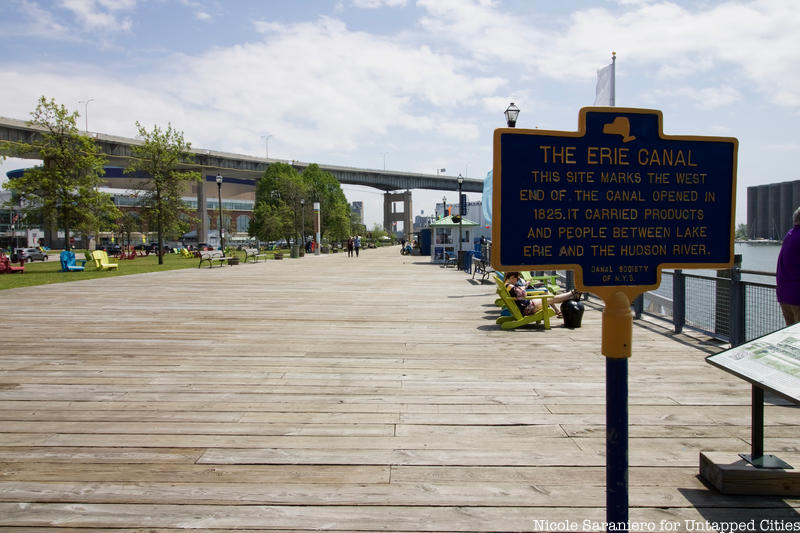
When the Erie Canal opened in 1825, the city of Buffalo was its western terminus. Connecting Lake Erie to the Hudson River, the canal opened up an important passageway for goods and resources to travel between the western United States and New York City then out across the Atlantic. Being at the end of the canal, Buffalo became a northeastern “Gateway to the West.” The two mini-Statue of Liberties at the top of the Liberty Building symbolize this gateway. Some even consider Buffalo the eastern most midwest city. Before steam powered engines, barges along the erie canal were pulled by horses or mules walking on the towpath that ran alongside the canal. The canal, along with railroad transportation, helped bolster Buffalo’s economy and population.
You can see the remnants of Buffalo’s bustling canal days in the foundation ruins located between the Commercial Slip and Lloyd Street. These are the vestiges of warehouses and brick buildings that once stood along the western terminus of the Erie Canal. With the advent of steam powered ships and absorption of the Erie Canal into the New York State Barge Canal System along with the Champlain, Oswego, and Cayuga–Seneca canals, parts of the old Erie became obsolete. In the 1930s it was filled in as part of a Works Progress Administration program. For decades the canalside sat abandoned and undeveloped.
Now, the waterfront is experiencing a resurgence. In the early 2000s part of the old Erie Canal and the Commercial Slip were restored. The area is turned into an ice rink in the winter. The surrounding shores are being built up with attractions like the brand new Explore and More Children’s Museum, the Buffalo and Erie County Naval and Military Park, and SharkGirl, a quirky public art piece created by Casey Riordan Millard. The waterfront is a great place to spend a sunny afternoon walking along the river or lounging in the Adirondack chairs which line the boardwalk.
Cool Streets of Buffalo
10. Millionaire’s Mile
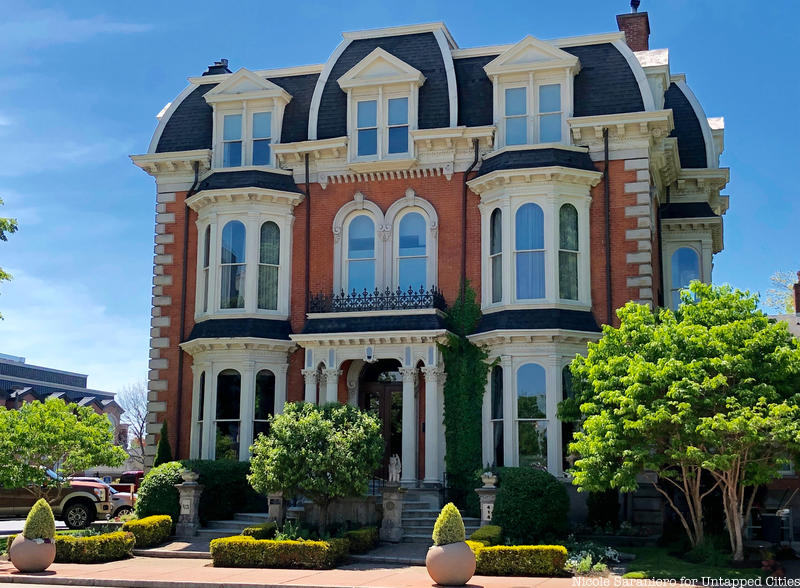
The Mansion on Delaware, Originally the home of Industrialist Charles F. Sternberg, now a luxury hotel run by CityInn Buffalo, LLC, the same proprietor as the Hotel Henry
Delaware Avenue, a roadway that runs north-south from the northern neighborhoods of Buffalo through downtown to Niagara Square, was the place to build a mansion at the turn of 20th-century. At that time Buffalo was prospering. Buffalo ranked as the eighth largest city in the country and it boasted 60 millionaires, more per capita than any other American city. The rich flaunted their financial fortunes with large mansions just outside of downtown Buffalo.
Their homes now serve as reminders of the Gilded Age and have been absorbed into the modern fabric of the city as it has grown and expanded over the past 100 plus years. The highest concentration of these mansions can be spotted on the west side of Delaware Avenue between North and Bryant Streets, an area designated as the Delaware Avenue Historic District. In this region you will find the stately George and Charles Williams Houses designed by the illustrious architecture firm of McKim, Mead & White, The Stephen M. Clement House, Thomas R. Lockwood House, and a handful more. You can stroll the street yourself and admire the facades or join a guided tour with Explore Buffalo to learn more history about each site and even go inside some of them!
11. Elmwood Village
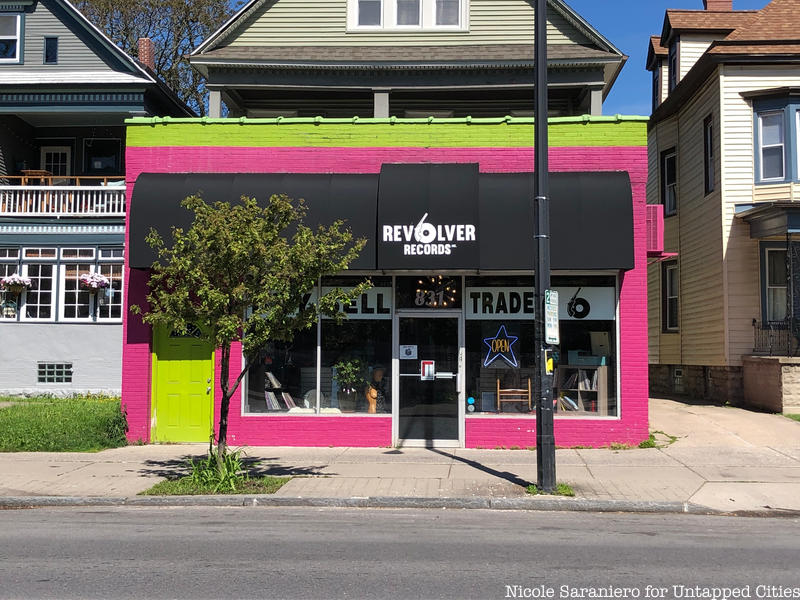
Just steps from the Albright-Knox you’ll come upon the lively street of Elmwood Avenue, a thoroughfare which runs through the Elmwood Village neighborhood and is lined with independently owned shops and restaurants. This shopping district is the perfect to place to get souvenirs that are more sophisticated than shot glasses or magnets. Stores like Shopcraft, a gallery and gift shop where everything is crafted by local artists, usually by hand, are the type of establishments you’ll find as you stroll down the street. Other notable stops are Revolver Records, Talking Leaves Bookstore, and Everything Elmwood. If you get peckish, it’s easy to find a place to sample some of Buffalo’s distinct specialty food items, like a beef on weck sandwich (roast beef on a salty kummelweck roll) at Charlie the Butcher or sponge candy at Watson’s. Wander down the residential side streets to see some of Buffalo’s charming Victorian and Craftsmen style homes.
Restaurants
12. La Puertas
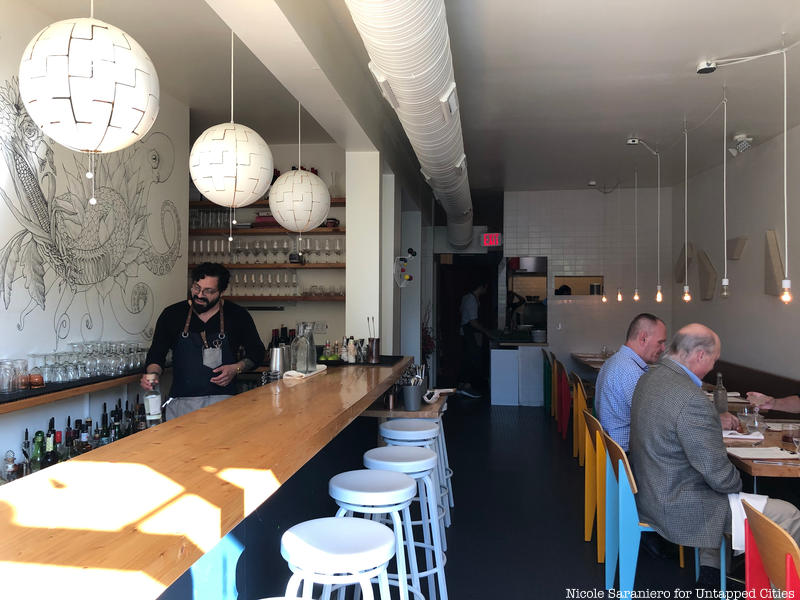
The foodie scene is blossoming in Buffalo thanks to innovative dining venues like Las Puertas and the driving forces behind them, in this case, founder and 2018 James Beard-nominated chef Victor Parra Gonzalez. Born in Acapulco and trained in Quebec, Gonzalez mixes the vibrant flavors and ingredients of Mexico with French culinary techniques at this upscale Mexican restaurant in Buffalo’s diverse West Side. His mission is to bring adventure to your plate.
The menu features a rotating list of courses, usually seven to nine, that changes about every thirty five days. The finely crafted dishes are inspired by Gonzalez’s frequent trips through Mexico and are made with fresh, locally sourced, seasonal ingredients. Each multi-course, small plate menu is based on a specific region in Mexico that Gonzalez travels to. There he curates the best of the region’s cuisine and brings what he finds back to Buffalo. Untapped Cities got to go on a culinary adventure with Gonzalez, who serves and explains each course, where we tasted dishes inspired by Tulum in Mexico’s Yucatan Peninsula (There is another Las Puertas there!). Highlights of our journey included a slow roasted pork, cricket mole and a cold summer squash soup. At Las Puertas being adventurous pays off as each course is satisfying in a different way, and even if you don’t love one, there is another coming right up.
13. West Side Bazaar
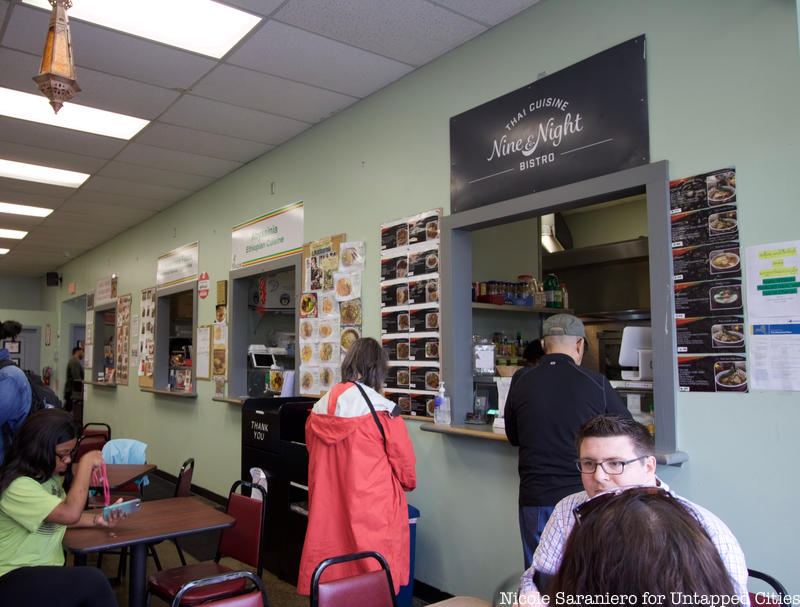
After Queens, the West Side neighborhood of Buffalo is the most diverse in all of New York State and the benefits of that diversity are exemplified at the West Side Bazaar. The West Side Bazaar is a great place to grab a quick lunch and while you do so, you’ll be helping local entrepreneurs launch their businesses. This indoor international market is filled with both retail and food vendors run by immigrants, refugees, and low-income individuals. The Bazaar is a Westminster Economic Development Initiative which acts as a small business incubator that provides a safe, supportive, and inexpensive place for entrepreneurs to gain their footing. It also serves as a special place for visitors to be exposed to new international foods and goods. More than ten different countries, from Myanmar to East Africa, are represented by the businesses inside. You can chow down on authentic dishes ranging from over thirty different kinds of sushi, to Ethiopian meals served on injera, a sour dough flat bread used as a dish. Every business owner has their own story of how they came to Buffalo and their own dreams and goals for their business. Since its founding in 2012, the West Side Bazaar has seen fifteen businesses graduate and continue to flourish.
14. Gabriel’s Gate
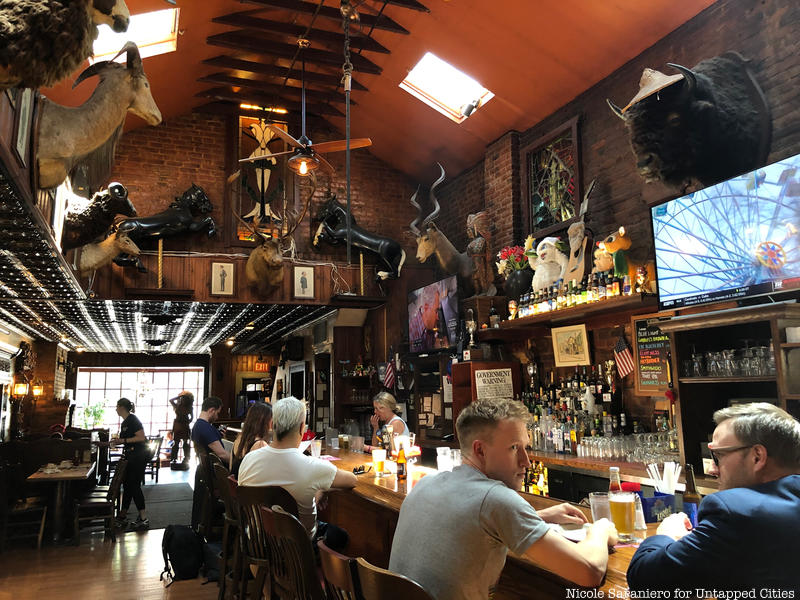
If you go to Buffalo, you have to get buffalo wings. The restaurant which claims to have been the first to invent the eponymous wing in 1964 is the Anchor Bar. What makes a buffalo wing a buffalo wing is that it is fried but not breaded and then covered in buffalo sauce. Since the debut of the wings in the 1960s, establishments all over the city have come up with a variety of sauce flavors and preparation techniques. You can see the best of Buffalo’s wing offerings all in one place at the upcoming annual National Buffalo Wing contest at the end of August or hop along Wing Trail, a curated list of twelve pubs serving up the best wings.
One of the pubs you’ll find along the Wing Trail is Gabriel’s Gate. Located in the charming neighborhood of Allentown, one of Buffalo’s oldest and most historic neighborhoods, the restaurant is housed inside a Tifft rowhouse, one of several brick houses on the street built by businessman George Washington Tifft in 1864. The atmosphere inside is that of a cozy tavern, complete with two brick fireplaces, a tin ceiling, wooden booths and deer heads mounted on the walls. In the warmer months you can eat outside on the back patio. The wings you’ll find at Gabriel’s Gate are crispy and classic. It’s a spot locals rely on for consistently delicious wings. After you’ve checked wings off the to-do list, you’ll step out into one Buffalo’s most charming and hip neighborhoods, so it’s worth a walk around to admire the architecture of the surrounding homes.
Bar
15. Founding Fathers Pub
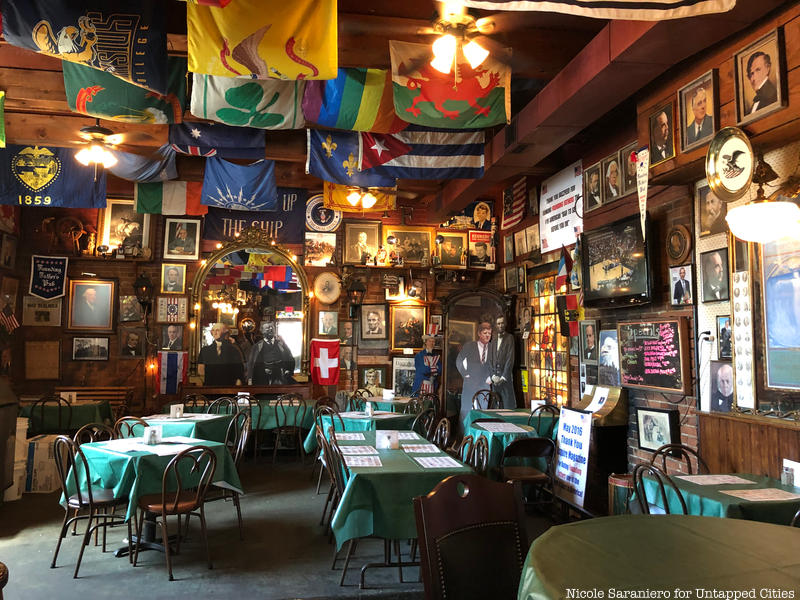
Located (appropriately) just a short walk from the Theodore Roosevelt Inaugural Site and just a block off of Delaware Avenue on Edward Street is a quirky presidential themed bar, Founding Fathers Pub. The pub was founded in 1986 by former social studies teacher Mike Driscoll who poured his love of history all over this place. All of the wall space from floor to ceiling is covered in presidential portraits and photographs, campaign memorabilia and other historical ephemera and the ceiling is draped with flags. Beyond the decor, the historical theme extends to a trivia night on the first Tuesday of every month and when you find him behind the bar, Driscoll is always ready with a fun fact to share. The pub has a jovial and welcoming atmosphere where regular locals and visitors alike can relax and enjoy a drink and some of the free popcorn and nachos that are always on hand. There is even a topping bar stocked with salsa, cheese, jalapeños and chili to go on top.
Looking for more adventures? Check out our guide to Niagara Falls and other NYC Getaways!






